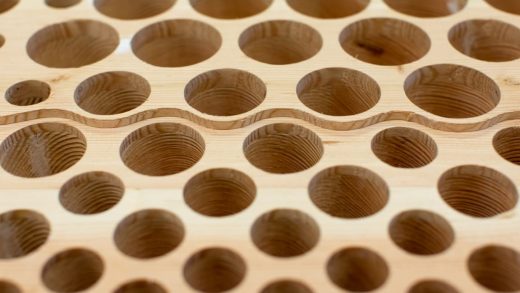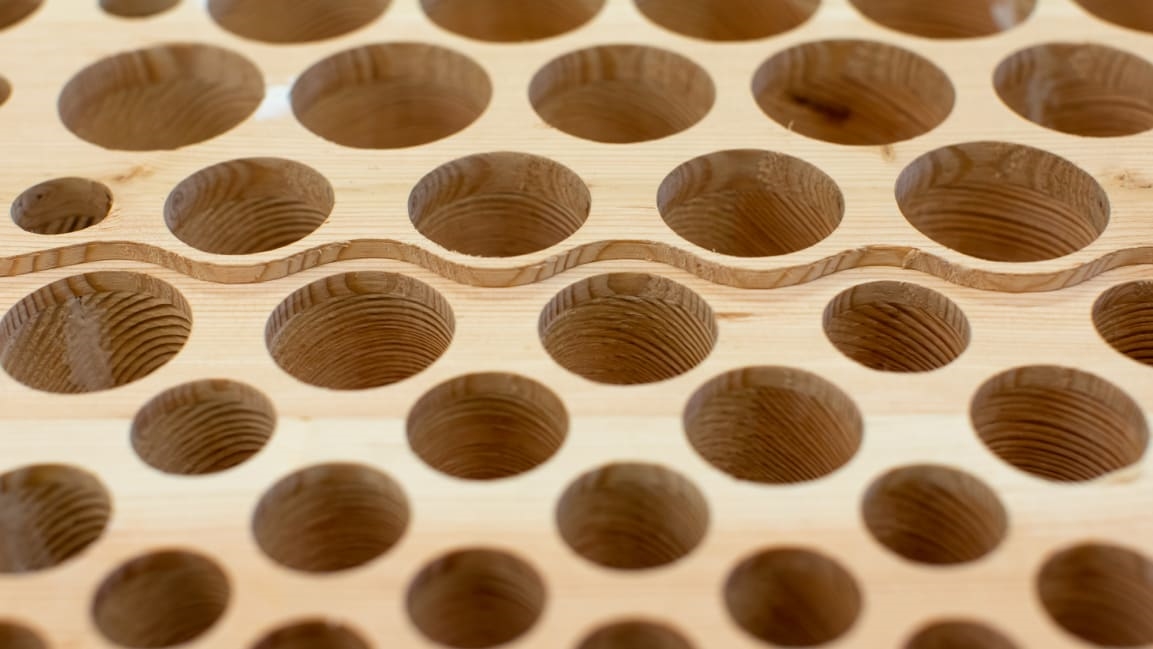These hole-riddled walls are like noise-canceling headphones for your office
The secret to quieter rooms and offices may be hiding inside a bottle.
Or really, many bottles. A new prototype sound absorption technique developed through a partnership between the Seattle-based architecture firm NBBJ and acoustics researchers at the University of Washington shows that the shape of empty bottles is highly effective at reducing noise. If embedded inside buildings or wooden panels, the narrow necks and wide empty cavities inside bottles could serve as architectural sound traps.
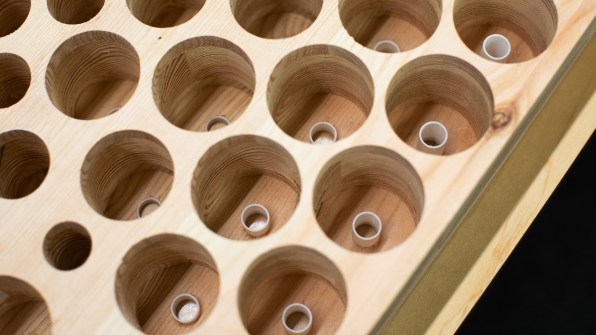
By tuning these forms to resonate with specific acoustical wavelengths—particularly the low frequencies of human speech—ceiling or wall panels pierced with Swiss cheese-like holes can capture and neutralize noise. Tests of prototypes inside NBBJ’s office measured noise reductions of around 13 decibels, or about the equivalent of wearing noise-canceling headphones. In terms of the perception of noise in the space, that’s a 60% reduction.
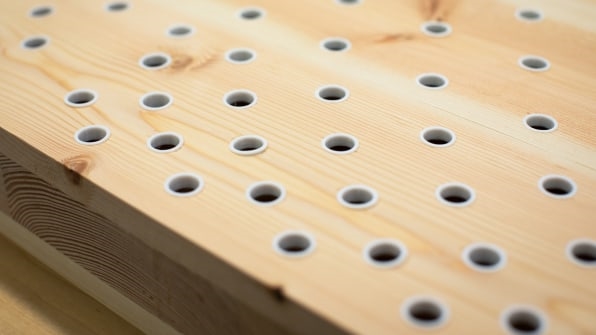
“We can’t ignore the human voice. It ties back to a survival mechanism,” says Ryan Mullenix, a partner at NBBJ. “That has a big impact on our executive function, our cognitive control, our emotional self-regulation. In the basic sense, it just stresses us out.”
With people now gradually returning to their offices, the issue is not just theoretical. There may be things people have missed about working in an office, but noise isn’t one of them. And in the modern office environment, the human voice is pervasive. With open floor plans, chatty coworkers and plenty of hard surfaces like desks that reflect sound, the noise of the office is difficult to escape. Increasingly common green buildings are actually making the problem worse. Green buildings perform poorly when it comes to acoustic disturbance, largely because their natural materials tend to be harder and more reflective of sound.
“If we don’t want to understand the half conversation on the phone a few desks away and we want to remain focused, we have to get rid of low frequency noise,” says Tomás Méndez Echenagucia, an assistant professor at the University of Washington College of Built Environments.
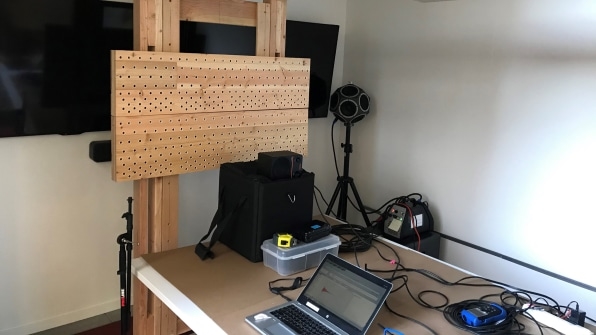
One way to do that is to catch the sound before it can reflect across the room. That’s where the sound absorptive bottles come into play.
The science behind this sound absorption is both simple and complex. Consider the sound created by blowing across the top of a bottle. The tone that results is determined mostly by the resonance frequency of the cavity inside the bottle, where the pressure of the blown air vibrates, resonates, and comes back out as sound. But without the extra pressure of blown air—say, just the general sound of a human voice in a room—sound would enter that bottle’s neck, and those specific frequencies that resonate in the cavity would mostly disappear.
“When sound energy flows in front of the cavity, some of that energy goes into that cavity and acts as a resonator,” says Méndez Echenagucia. The acoustic waves resonate with the inside of the bottle and then clash with the different shape of the bottle’s neck, dissipating their energy. “The friction of particles in the air within the cavity, enhanced by resonance, exchanges acoustic energy into thermal energy.” The sound transforms into heat and is no longer audible.
“If we take enough of these bottles and we tune them to a particular frequency range and we put them next to each other, they can eliminate low frequency sound quite efficiently,” says Méndez Echenagucia.
To test this concept, NBBJ, Méndez Echenagucia, and University of Washington graduate student Vidhya Rajendran computationally evaluated the acoustics of three existing office spaces to determine the low frequency sounds that should be reduced and where sound absorption could be most effective. They then began testing arrays of sound-absorbing bottle-like shapes, known as Helmholtz resonators, built into small wooden frames, with the small necks of the bottles facing outwards and the cavities hidden inside. After several tests, they found an optimal array of these resonator cavities to absorb the common low frequencies of human speech and milled them into a large cross-laminated timber panel that could be hung on a wall or ceiling. The panels were installed in NBBJ’s offices, where measurements by Arup acoustic consultancy showed the panels cut perceptible noise by 60%.
Mullenix says the potential is great, and not only in terms of noise reduction. “A lot of the acoustical approaches look at removing excess sound energy, background noise and speech sounds, but they tend to be applied in the space. You’re adding material, you’re adding porous elements,” he says. These tend to be soft, often made from synthetic materials with a high carbon footprint. For places like health care settings, spongy acoustic panels are too difficult to keep clean and safe.
The resonator-based approach offers an alternative that’s able to be embedded in hard surfaces that are easier to clean. In addition to their prototype wood panels, NBBJ and the University of Washington are testing their use in walls and prefabricated conference rooms. They even see the potential for resonators to be built into the structure of buildings themselves.
Méndez Echenagucia says this approach could work particularly well in floor slabs, which tend to be made of concrete. “They are everywhere and they are by far the most material-intense part of our buildings,” he says. “We don’t want them to just be structural, we want them to be multifunctional.” A side benefit is that embedding these hollow resonators in floor slabs or walls would result in slightly less concrete or wood being used in projects, bringing down their environmental footprint.
Mullenix says NBBJ is now working to integrate this sound absorption approach in several projects, including a forthcoming cross-laminated timber building in Seattle.
The possibilities are vast, according to Méndez Echenagucia, and could include anything from panels hung in noisy areas like elevator lobbies, ceiling fixtures in bathrooms and medical offices, or even resonators that are embedded in the facades of buildings to reduce noise before it enters. “Smarter ways of mitigating sound transmission are definitely part of the future of our buildings,” he says.
(57)

